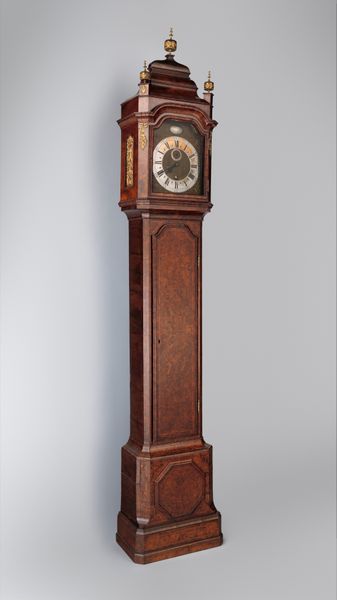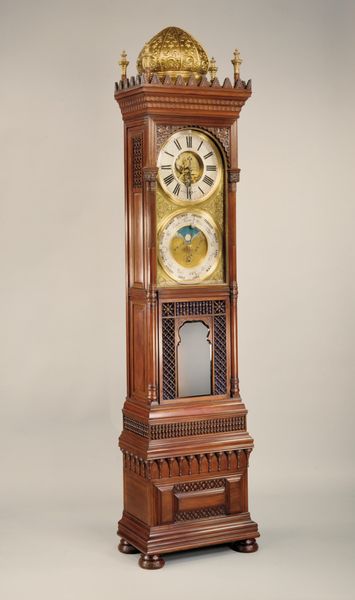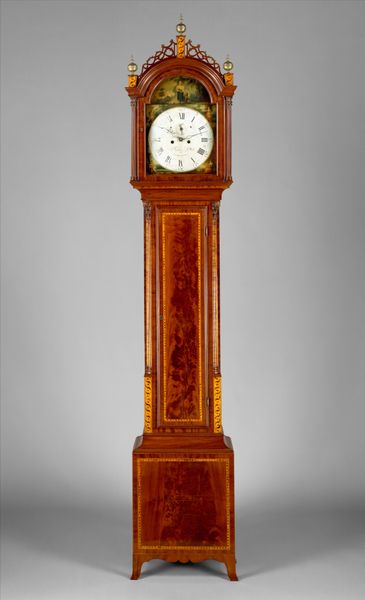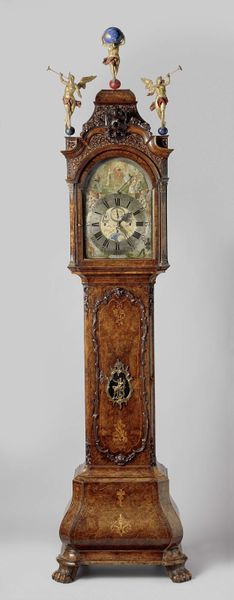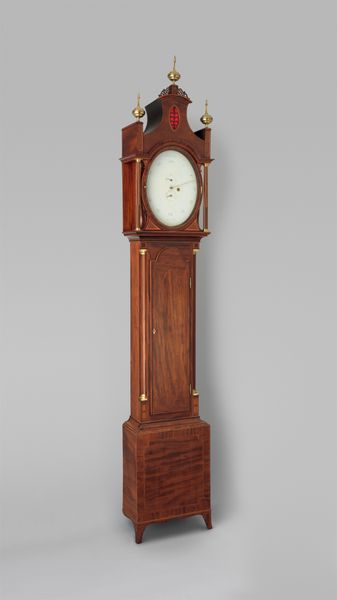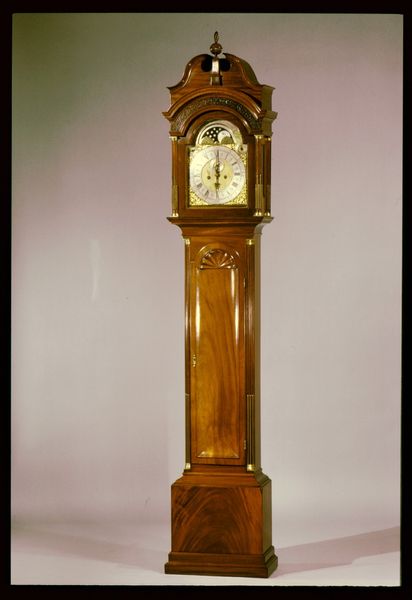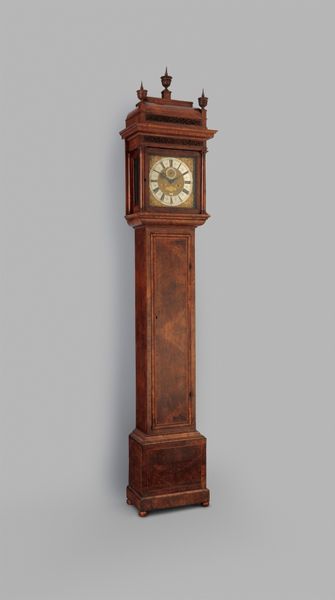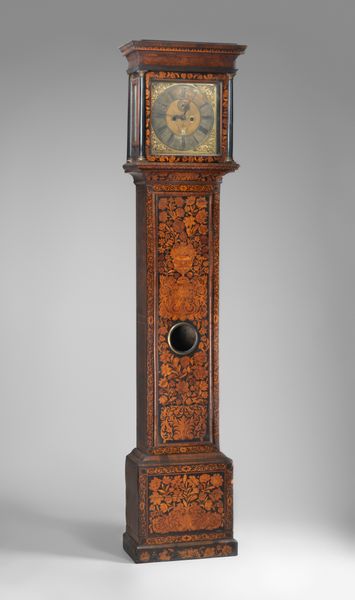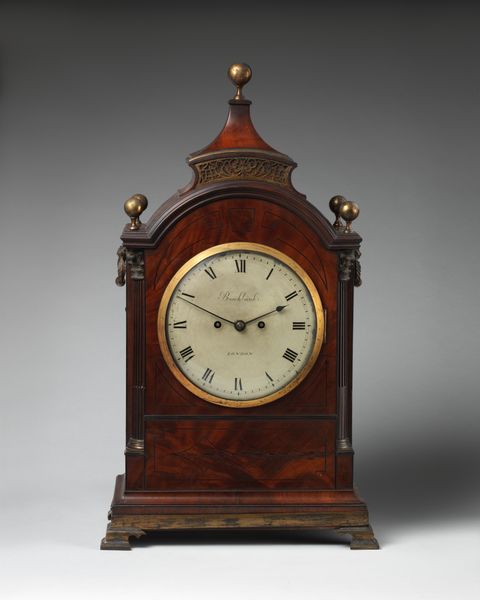
wood
#
baroque
#
sculpture
#
furniture
#
traditional architecture
#
wood
#
decorative-art
Dimensions: 259.1 × 59.7 × 29.2 cm (102 × 23 1/2 × 11 1/2 in.)
Copyright: Public Domain
Curator: Isn't it lovely? We're looking at a Tall Case Clock, crafted around 1750, here at the Art Institute of Chicago. It’s largely made of wood, with some intricate detailing. Editor: Oh, it has that stoic presence of grand old things, doesn’t it? I find myself contemplating mortality. There is this definite baroque solemnity...but I must confess it's also giving me real haunted mansion vibes. Curator: It definitely carries weight. In its time, a clock like this wouldn’t have just been a timepiece, it was a major statement about wealth, knowledge and order. Editor: Absolutely, control over time equated to control over labor, especially in the context of nascent capitalism. The clock became the metronome of industrialized life, imposing a strict rhythm. I’m curious though, what were the decorative trends that led to its production, its display within an interior setting? Curator: The Baroque aesthetic definitely emphasizes grandeur. The carvings, the way the wood grain is highlighted—it’s all about showing off opulence. Consider too that decorative arts were evolving rapidly then. This clock isn’t merely functional; it's aspiring to be a piece of sculpture, elevating its domestic space. Editor: Yet there is an element of that control, I am still reminded, especially when objects become almost totemic in their significance. How much agency was afforded to people creating it? What lives did its rigid demand for synchronicity control? I wish more material focused discussion questioned our place. Curator: Well, on that cheery note, there is beauty still there, even with darkness in the material or intention. The clock stands though as a potent reminder—time, as they say, marches on. Even when looking at past relics and remnants. Editor: Leaving us to confront where we will land in its chronology too!
Comments
No comments
Be the first to comment and join the conversation on the ultimate creative platform.

